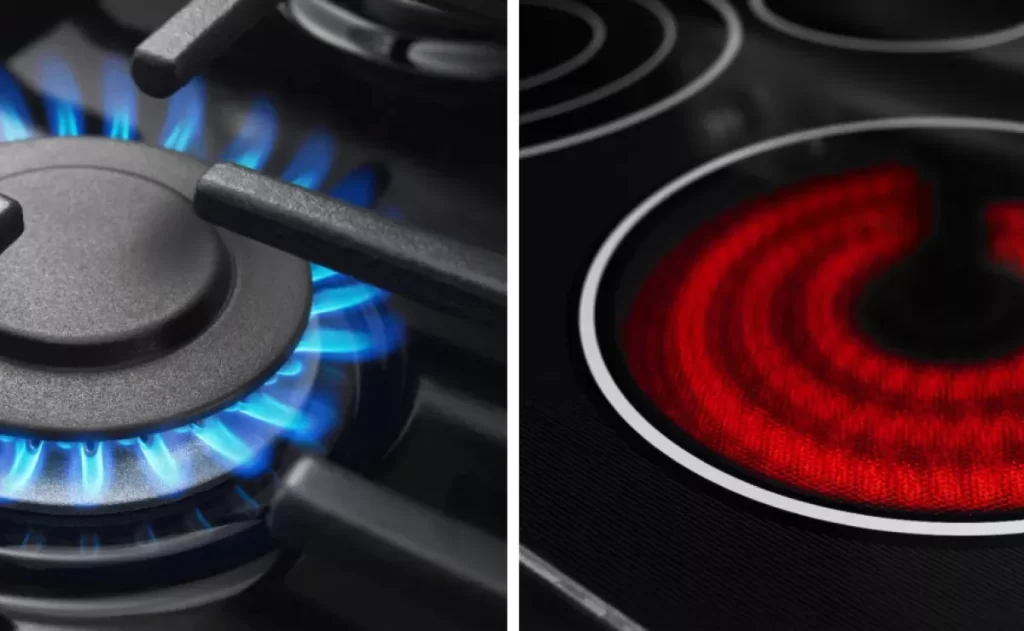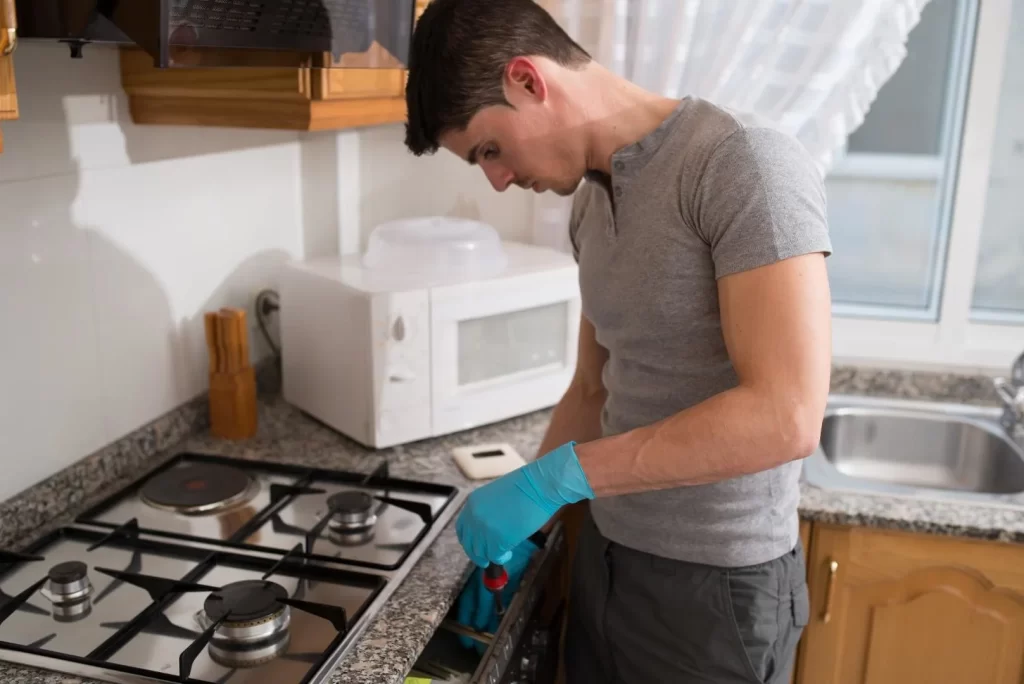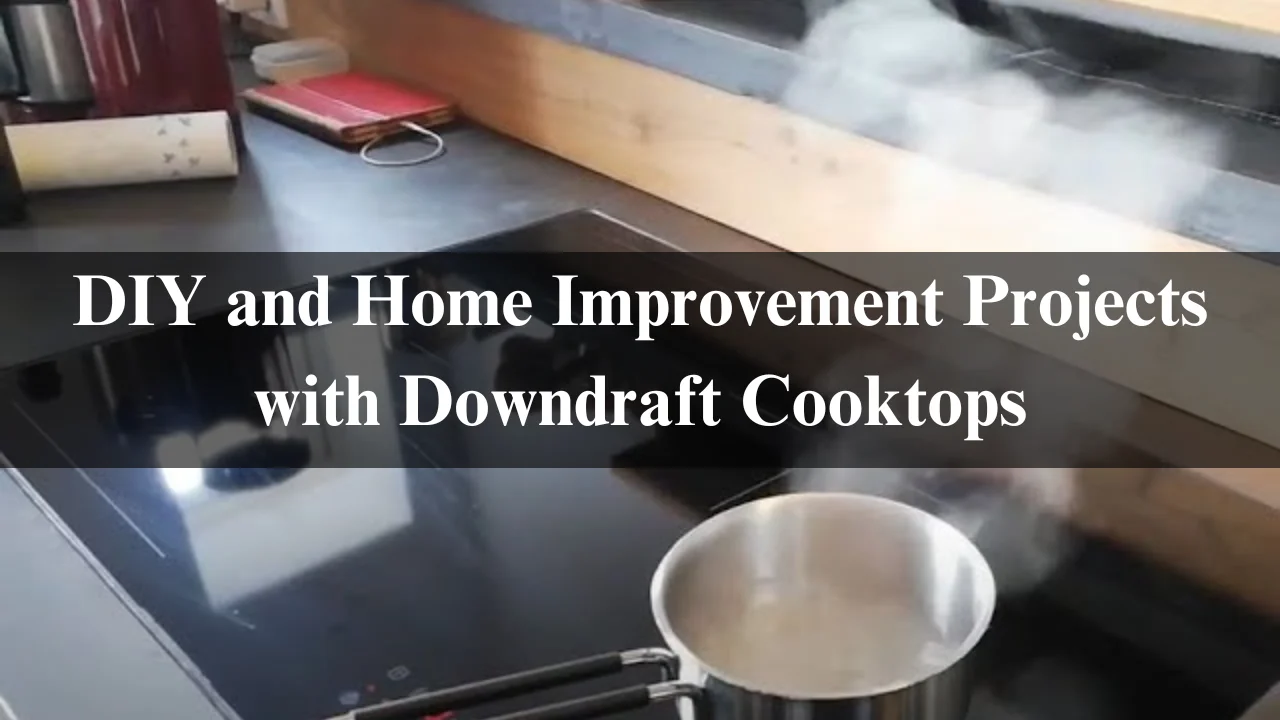Hey there! Have you ever been cooking up something tasty on your stove and suddenly the kitchen fills with smoke and smells? Not so fun, right? That’s where downdraft cooktops come in to save the day! But what exactly are they, and why should you care?
Well, in this article, we’ll dive into everything you need to know about these cool kitchen gadgets, how they can upgrade your home, and even guide you through some DIY projects to make installing and maintaining one a breeze.
Ready to learn more about this kitchen game-changer? Let’s get started!
Table of Contents
Choosing the Right Downdraft Cooktop
Size and Style Options
Downdraft cooktops come in various sizes to fit your kitchen layout. Whether you’ve got a small cozy kitchen or a large cooking space, there’s a downdraft cooktop for you. Sizes typically range from 30 inches to 36 inches wide, so measure your counter space carefully before you buy.
Style tip: Downdraft cooktops also come in different finishes, like stainless steel, which adds a sleek, modern look to your kitchen.
Gas vs. Electric: What’s Best for You?
Now, the next big question: gas or electric? Each has its perks, and it all depends on what you prefer.
- Gas cooktops give you more precise temperature control. You can see the flame, which makes it easier to adjust.
- Electric cooktops are easier to clean since they have a flat surface. Plus, they give your kitchen a modern, minimalist look.

So, if you’re someone who loves fine-tuning heat levels, gas might be your best bet. If you prefer easy cleanup, go electric!
Installing a Downdraft Cooktop at Home
DIY or Hire a Pro?
One of the coolest things about downdraft cooktops is that they can be installed with some DIY skills, though it does require some know-how. If you’re comfortable with basic tools, you can save money by installing it yourself. However, if the thought of messing with gas or electrical lines makes you nervous, don’t worry—it’s always a good idea to call a pro.

Step-by-Step Installation Guide
Tools and Materials Needed
- Measuring tape
- Screwdrivers
- Electric drill
- Adjustable wrench
- Vent ducting (if needed)
- Wire connectors
- Utility knife
Ready for a DIY project? Here’s how to install a downdraft cooktop:
- Turn off the power or gas supply to the old cooktop.
- Measure and cut a hole in the countertop (if needed) for your new cooktop.
- Install the vent system underneath the cooktop, making sure the air can flow freely.
- Place the cooktop in the hole and secure it with the included hardware.
- Reconnect the gas or electrical lines.
- Test it out! Make sure everything works smoothly and the downdraft is pulling air properly.
Boom! You’ve just installed your own downdraft cooktop.
Electrical and Ventilation Requirements
Proper ventilation is key for downdraft cooktops. Depending on the model, you may need external venting that leads outside. Alternatively, recirculating models use filters to clean the air before releasing it back into the kitchen. Ensure your electrical setup matches the power needs of the cooktop and fan.
Integrating Downdraft Cooktops in Kitchen Islands
One of the most popular placements for downdraft cooktops is within kitchen islands. This setup not only provides a central cooking station but also keeps the kitchen’s design sleek and modern. When installing a downdraft in an island, consider using countertop materials that complement the cooktop’s design.

Modern Design Ideas with Downdraft Cooktops
Incorporating a downdraft cooktop into your kitchen design opens up various creative possibilities. Here are some ideas:
- Minimalist Designs: Pair the cooktop with flat-front cabinetry and handleless designs for a modern, streamlined kitchen.
- Contrasting Colors: Use the cooktop as a focal point by choosing contrasting countertop materials, such as black stainless steel against white quartz.
- Open Shelving: Without a bulky hood above, you can opt for open shelving, which adds a decorative element to the kitchen.
Maximizing Space in Small Kitchens with Downdraft Cooktops
In small kitchens, space is often a constraint. Downdraft cooktops solve this problem by eliminating the need for overhead venting, which opens up more storage options. You can maximize the available space by integrating pull-out shelves, drawers, and other smart storage solutions under the cooktop.
Cost Considerations for DIY Installation
The cost of a downdraft cooktop ranges from $1,000 to $3,000, depending on the brand, features, and size. Installing it yourself can save you labor costs, which typically add another $300 to $600 to the project. If your kitchen requires extensive ductwork or electrical upgrades, those costs will increase.
Common Installation Mistakes to Avoid
When installing a downdraft cooktop, there are some common mistakes that DIYers should avoid:
- Improper Vent Placement: Make sure the vent is correctly placed to ensure maximum efficiency.
- Incorrect Cut-Out Dimensions: Always double-check measurements before cutting your countertop.
- Skipping the Electrical Check: Ensure the power supply matches the requirements of the cooktop to avoid electrical hazards.
Maintaining and Cleaning Your Downdraft Cooktop
Regular Cleaning Tips
Keeping your downdraft cooktop in tip-top shape doesn’t have to be a hassle. Here are some quick and easy cleaning tips:

- Wipe down the surface after each use with a damp cloth.
- Clean the filters regularly by popping them out and washing them with warm, soapy water.
- Check the vent to make sure it’s not blocked by grease or debris.
Simple, right? With just a little regular maintenance, your cooktop will keep working like a charm.
Troubleshooting Common Issues
If you notice your downdraft cooktop isn’t pulling air as well as it used to, here are a few things you can check:
- Clogged filters: Make sure the filters are clean.
- Vent blockages: Look under the counter to see if anything is blocking the vent.
- Fan not working: If the fan isn’t running, you may need to call a professional to check it out.
DIY Projects to Enhance Your Kitchen with a Downdraft Cooktop
Remodeling Ideas
If you’re installing a downdraft cooktop, why not take the opportunity to upgrade your kitchen? Here are some fun ideas to make your kitchen even more functional and stylish:
- Add an island: Downdraft cooktops are perfect for kitchen islands, giving you more counter space and a central place to cook and entertain.
- Upgrade your countertops: Pair your sleek new cooktop with granite or quartz countertops for a modern look.
Adding Counter Space and Storage
If you’re always wishing for more space in your kitchen, now’s the time to add some! Consider:
- Installing extra cabinets under the cooktop for added storage.
- Adding pull-out shelves to make it easier to access pots, pans, and utensils.
These simple additions will make cooking easier and keep your kitchen clutter-free.
Related Articles:
Troubleshooting and 5 Common Issues with Downdraft Cooktops
Maintaining and Upgrading Your Downdraft Cooktop All Info 2024
Cooking with Downdraft Cooktops Pros And Cons 2024
Conclusion:
You’ve learned what a downdraft cooktop is, how to choose the right one, how to install it, and how to keep it clean. Plus, you’ve picked up some awesome kitchen improvement tips! Whether you’re doing a full remodel or just want to replace your old stove, a downdraft cooktop can be a smart and stylish upgrade.
So, what do you think? Ready to start your next DIY project? You’ve got this!
Key Takeaways
- Downdraft cooktops are great for keeping your kitchen smoke-free without the need for overhead vents.
- They come in different sizes, styles, and can be either gas or electric.
- You can install it yourself if you’re comfortable with basic tools, but don’t hesitate to hire a professional if needed.
- Regular cleaning and maintenance will keep it running smoothly.
- Downdraft cooktops are perfect for kitchen islands and can even inspire a full kitchen remodel!
FAQs
Are downdraft cooktops as efficient as traditional range hoods?
Downdraft cooktops are generally efficient for typical home cooking. However, they may not capture smoke and grease as effectively as high-powered range hoods during intense cooking, such as frying or grilling.
Can I install a downdraft cooktop on my own?
Yes, many homeowners can install a downdraft cooktop themselves if they have basic electrical and carpentry skills. However, complex ventilation setups may require professional help.
Do downdraft cooktops require external venting?
Some models require external venting, while others recirculate air using filters. Check the manufacturer’s specifications for details on ventilation requirements.
How often should I clean the downdraft filters?
For optimal performance, clean the filters every 2 to 3 months, or more frequently if you cook often.
Are downdraft cooktops more expensive than regular cooktops?
Yes, downdraft cooktops are generally more expensive than standard models due to their built-in ventilation system and advanced technology.




